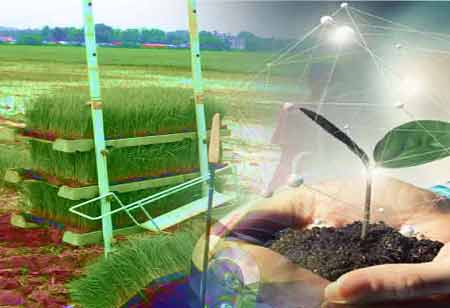Thank you for Subscribing to Agri Business Review Weekly Brief
Identification of Good Quality Seeds for a Healthy Harvest
In simple terms, a seed is an underdeveloped plant embryo and a fundamental input in agriculture.

By
Agri Business Review | Tuesday, May 02, 2023
Stay ahead of the industry with exclusive feature stories on the top companies, expert insights and the latest news delivered straight to your inbox. Subscribe today.
The seed sowed for agricultural purposes must be of high quality and in good shape, and it must not be afflicted with a disease or be infested with pests.
FREMONT, CA: In simple terms, a seed is an underdeveloped plant embryo and a fundamental input in agriculture. In flowering plants, the process of germination allows the seed to grow and mature into a fully grown plant. The seed that will be sowed for agricultural reasons needs to be of good quality and healthy, which means it must be bereft of any disease or pest infestations. Consequently, for greater crop production, the intake of seeds should be carefully chosen.
Seed quality is the possession of seed with the necessary levels of physical and genetic purity, together with physiological soundness and good health. The key seed quality figures are outlined as follows.
1. Physical quality: It refers to how free the seed is from contamination by other seeds, trash, inert materials, diseased seed, and insect-damaged seed. Physically, a good seed should be uniform in size, weight, and colour, free of stones, dust, leaves, twigs, stems, flowers, and fruit, as well as devoid of other crop seeds and inert matter. Additionally, it must be free of seeds that are shrivelled, infected, mottled, mouldy, discoloured, damaged, or empty. The seed should be recognisable as belonging to a certain species or species from a particular group. Lack of this character trait will harm seed planting value and field establishment. By properly cleaning and grading the seed (processing) after collecting and before sowing or storing, this quality character might be accomplished with seed lots.
2. Genetic purity: This refers to the seed's true-to-type nature. In other words, the tree, plant, or seedling that grows from the seed should resemble its mother in every way. To increase the crop's yield, resistance, or desirable quality elements, it is crucial to have this quality character.
3. Physiological quality: It is the seed's exact manifestation in subsequent generations and/or multiplication. Seed germination and seed vigour are two of the seed's physiological quality traits. Viability refers to a seed's ability to survive. Germinability is the degree to which a seed is alive enough to grow healthy seedlings or the capacity of a seed to grow seedlings with healthy roots and shoots under optimum conditions.
4. Seed Health: The only way to determine the health status of a seed is to look for insect infestation and fungal infection inside or on the seed. Fungi and insect pest infestations should be avoided since they will lower the physiological quality and physical quality of the seed during long-term storage. The deterioration status of the seed, which is likewise reflected by the seed's low vigour status, is also considered to be a component of its health status. The health of the seed has a direct impact on the seed quality traits and ensures their soundness in seed for the generation of superior seedlings at the nursery or field.
Choosing healthy, high-quality seeds is essential for generating high yields in agricultural production. It is important to choose seeds carefully, and they should be free of any disease or insect infestation. A quick and efficient approach to determine if seeds are viable is to let them sink in water. By employing this technique, farmers can be certain that they only sow high-quality, viable seeds, producing healthy plants and a plentiful crop.





